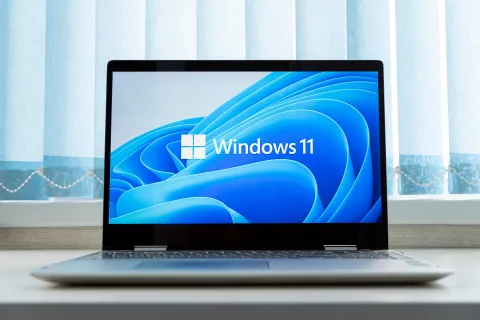Windows 10 EOL 2025: How to Upgrade to Windows 11 Free & Easy
As of October 14, 2025, Microsoft has officially ended support for Windows 10. This means no more free security updates, bug fixes, or new features from Microsoft, leaving your PC vulnerable to emerging threats. If you're still running Windows 10 like millions of users worldwide you're now at a crossroads. Upgrading to Windows 11 is the most straightforward path to staying secure and accessing the latest innovations, but it's not always simple.
In this guide, we'll break down what Windows 10's end of life (EOL) really means, the risks of sticking with it, and step-by-step instructions on how to get Windows 11. Whether your PC meets the requirements or not, we've got options to keep you moving forward. Let's dive in and ensure your setup is future-proofed.
What Does Windows 10 End of Life Mean?
Windows 10's EOL marks the end of Microsoft's free support lifecycle. Launched back in 2015, it was a powerhouse OS, but all good things must end. Post-EOL:
- No Security Updates: Microsoft stops releasing patches for vulnerabilities, making your system a prime target for hackers.
- No Feature Updates: The last version, 22H2, is it—no more enhancements or improvements.
- Limited Support: Technical assistance from Microsoft dries up, though community forums might still help.
The Risks of Staying on Windows 10
Ignoring EOL is like driving a car without brakes—risky and unwise. Here's why:
- Security Vulnerabilities: Without updates, new malware, ransomware, and exploits can compromise your data. Cyberattacks are on the rise, and unsupported OSes are low-hanging fruit.
- Software Incompatibility: Apps and games may drop support for Windows 10, leading to crashes or missing features.
- Performance Issues: Over time, your PC might slow down as it misses optimizations available in newer OS versions.
- Compliance Problems: For businesses or regulated industries, running an unsupported OS could violate standards.
Does Your PC Qualify for Windows 11?
Before upgrading, check if your hardware meets Windows 11's minimum requirements. Microsoft raised the bar to ensure better security and performance. Key specs include:
- Processor: 1 GHz or faster with 2 or more cores on a compatible 64-bit processor (check Microsoft's list for supported CPUs).
- RAM: 4 GB (8 GB or more recommended for smooth multitasking).
- Storage: 64 GB or larger.
- Graphics Card: Compatible with DirectX 12 or later with WDDM 2.0 driver.
- Display: High definition (720p) display greater than 9" diagonally, 8 bits per color channel.
- System Firmware: UEFI with Secure Boot capable.
- TPM: Version 2.0 (Trusted Platform Module) this is often the dealbreaker for older PCs.
To verify compatibility:
Download and run the PC Health Check app from Microsoft's website.
Go to Settings > Update & Security > Windows Update and click "Check for updates." If eligible, it'll notify you.
If your PC passes, great! If not, don't worry there are workarounds, though they come with caveats.
How to Upgrade to Windows 11 from Windows 10
Upgrading is free if you have a genuine Windows 10 license, and it's relatively painless for compatible devices. Here are the main methods:
Method 1: Via Windows Update (Easiest for Eligible PCs)
- Open Settings > Update & Security > Windows Update.
- Click "Check for updates."
- If Windows 11 is available, select "Download and install."
- Follow the on-screen prompts—your files and apps should carry over.
- Restart when prompted. The process can take 30 minutes to a few hours.
Method 2: Using the Installation Assistant
If Update doesn't offer it:
- Visit Microsoft's Windows 11 download page.
- Download the Windows 11 Installation Assistant.
- Run the tool and select "Upgrade this PC now."
- It’ll handle the download and installation.
Method 3: Clean Install with ISO (For a Fresh Start)
- Download the Windows 11 ISO from Microsoft.
- Create a bootable USB drive using tools like Rufus.
- Boot from the USB, follow the installer, and choose to keep or wipe your files.
What If Your PC Doesn't Meet Windows 11 Requirements?
Buy a New PC with Windows 11 Pre-installed
If your current device is too old or doesn’t meet the requirements, it might be time to upgrade your hardware. New PCs come with Windows 11 already installed and offer better performance, security, and support for modern apps
Need Help Upgrading?
At Tech 13, we’re here to make the transition smooth and stress-free. Whether you need help checking compatibility, upgrading your system, or choosing a new device, we’ve got you covered

